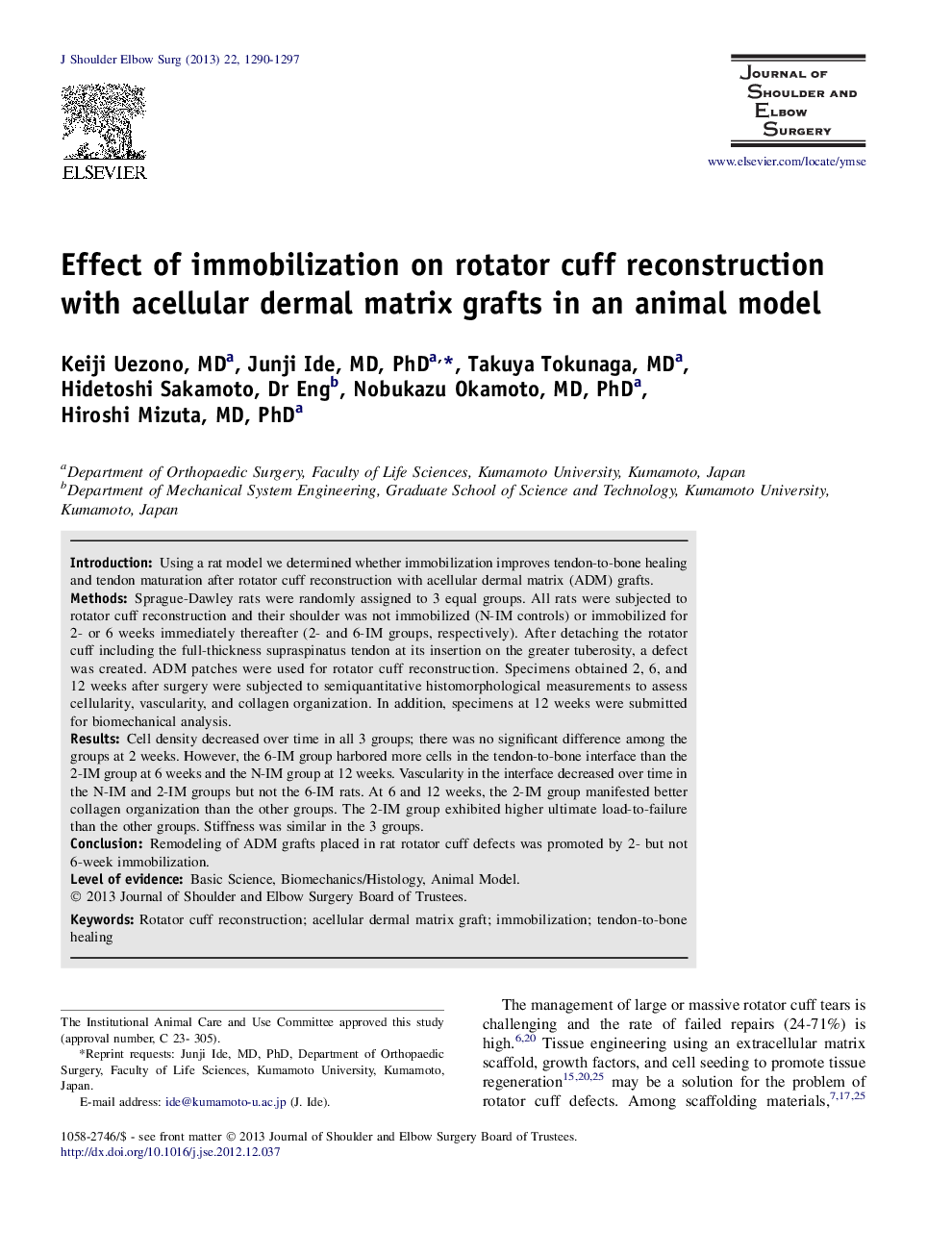| Article ID | Journal | Published Year | Pages | File Type |
|---|---|---|---|---|
| 4073613 | Journal of Shoulder and Elbow Surgery | 2013 | 8 Pages |
IntroductionUsing a rat model we determined whether immobilization improves tendon-to-bone healing and tendon maturation after rotator cuff reconstruction with acellular dermal matrix (ADM) grafts.MethodsSprague-Dawley rats were randomly assigned to 3 equal groups. All rats were subjected to rotator cuff reconstruction and their shoulder was not immobilized (N-IM controls) or immobilized for 2- or 6 weeks immediately thereafter (2- and 6-IM groups, respectively). After detaching the rotator cuff including the full-thickness supraspinatus tendon at its insertion on the greater tuberosity, a defect was created. ADM patches were used for rotator cuff reconstruction. Specimens obtained 2, 6, and 12 weeks after surgery were subjected to semiquantitative histomorphological measurements to assess cellularity, vascularity, and collagen organization. In addition, specimens at 12 weeks were submitted for biomechanical analysis.ResultsCell density decreased over time in all 3 groups; there was no significant difference among the groups at 2 weeks. However, the 6-IM group harbored more cells in the tendon-to-bone interface than the 2-IM group at 6 weeks and the N-IM group at 12 weeks. Vascularity in the interface decreased over time in the N-IM and 2-IM groups but not the 6-IM rats. At 6 and 12 weeks, the 2-IM group manifested better collagen organization than the other groups. The 2-IM group exhibited higher ultimate load-to-failure than the other groups. Stiffness was similar in the 3 groups.ConclusionRemodeling of ADM grafts placed in rat rotator cuff defects was promoted by 2- but not 6-week immobilization.
